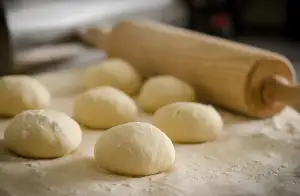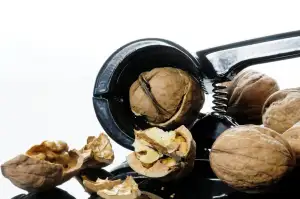Preserving the Taste: A Step-by-Step Guide on How to Pickle - Recipes for Pickling Perfection

- Benefits of Pickling
- Essential Equipment for Pickling
- Choosing the Right Ingredients
- Preparing the Brine Solution
- Preparing the Vegetables/Fruits
- Sterilizing the Jars
- Packing the Jars with Vegetables/Fruits
- Pouring the Brine Solution
- Sealing and Storing the Jars
- Pickling Tips and Tricks
- Delicious Pickling Recipes to Try
Pickling is a time-honored culinary technique that has been used for centuries to preserve food and enhance its flavor. It involves immersing vegetables or fruits in a brine solution or vinegar, which not only extends their shelf life but also imparts a unique tangy and savory taste. From crunchy pickles to tangy relishes, pickling offers a wide range of possibilities for adding depth and complexity to your dishes. In this step-by-step guide, we will explore the art of pickling and provide you with delicious recipes that will elevate your culinary creations. So let's dive into the world of pickling and unlock the secrets of preserving the taste!
Benefits of Pickling
Pickling is not just a culinary technique; it is also a way to preserve the taste and freshness of fruits and vegetables. There are several benefits to pickling. Firstly, pickled foods have an extended shelf life, allowing you to enjoy your favorite produce long after their season has ended. Secondly, pickling enhances the flavor profile of ingredients, adding a tangy and savory element that can elevate any dish. Additionally, pickled foods are rich in probiotics, which promote gut health and aid digestion. Lastly, pickling reduces food waste by allowing you to use up excess produce before it spoils. So not only does pickling add depth and complexity to your meals, but it also helps reduce waste while preserving the natural goodness of fresh ingredients.
Essential Equipment for Pickling
When it comes to pickling, having the right equipment can make all the difference. Here are some essential tools you'll need for successful pickling:
1. Jars: Choose glass jars with airtight lids. Mason jars are a popular choice, as they come in various sizes and are easy to seal.
2. Canning Pot: A large pot with a rack is necessary for processing your jars in a water bath. Ensure it's deep enough to fully submerge the jars.
3. Jar Lifter: This tool helps safely lift hot jars in and out of the canning pot without risking burns or spills.
4. Canning Funnel: A wide-mouthed funnel makes it easier to fill your jars with vegetables or fruits without making a mess.
5. Kitchen Scale: Accurate measurements are crucial for pickling success, so invest in a kitchen scale to weigh your ingredients precisely.
6. Cutting Board and Knife: You'll need a sturdy cutting board and sharp knife for slicing or chopping your vegetables/fruits before pickling.
7. Mixing Bowls: Use non-reactive bowls (such as stainless steel or glass) for preparing brine solutions or marinating your produce.
8. Colander/Strainer: These tools come in handy when rinsing and draining your vegetables/fruits before pickling.
9. Measuring Cups and Spoons: For precise measurement of ingredients, have a set of measuring cups and spoons on hand.
10. Wooden Spoon/Spatula: Use these utensils for stirring your brine solution or packing the vegetables/fruits into the jars.
Having these essential equipment will ensure that you're well-prepared to embark on your pickling journey!
Choosing the Right Ingredients
When it comes to pickling, choosing the right ingredients is crucial for achieving the perfect flavor and texture. Here are some tips to help you select the best ingredients:
1. Freshness: Always opt for fresh vegetables or fruits. Avoid using overripe or bruised produce as they may affect the quality of the final product.
2. Size: Choose vegetables or fruits that are small or can be cut into smaller pieces. This allows the brine solution to penetrate evenly and ensures a consistent taste throughout.
3. Variety: Experiment with different types of vegetables or fruits to create unique flavors. Popular choices include cucumbers, carrots, onions, cauliflower, peppers, and green beans.
4. Texture: Consider the texture of the ingredient when pickling. Some vegetables like cucumbers are crisp and crunchy when pickled, while others like onions become soft and tender.
5. Seasonality: Pickling is a great way to preserve seasonal produce. Use ingredients that are in season for optimal taste and freshness.
Remember, the quality of your ingredients will greatly impact the overall taste of your pickles. So choose wisely and have fun exploring different combinations!
Preparing the Brine Solution
The brine solution is a crucial element in pickling as it helps to preserve the vegetables or fruits and infuse them with flavor. To prepare the brine solution, you will need water, vinegar, salt, and spices.
Start by heating water in a large pot. The amount of water will depend on how many jars you are planning to fill. For every quart of water, add 1 cup of vinegar. This ratio can be adjusted according to your taste preference.
Next, add salt to the mixture. The general rule of thumb is to use 1 tablespoon of salt per quart of liquid. However, you can adjust this based on your personal preference for saltiness.
To enhance the flavor of your pickles, add spices such as mustard seeds, dill seeds, peppercorns, or garlic cloves. You can experiment with different combinations to create unique flavors.
Bring the mixture to a boil and let it simmer for a few minutes until the salt has dissolved completely and the flavors have melded together.
Once the brine solution is ready, remove it from heat and let it cool slightly before using it in the pickling process. It's important that the brine solution is warm but not boiling hot when pouring it into the jars.
Preparing a flavorful brine solution is key to achieving delicious pickles that are packed with tangy goodness. So take your time to perfect this step before moving on to preparing your vegetables or fruits for pickling.
Preparing the Vegetables/Fruits
Before you start pickling, it is important to properly prepare your vegetables or fruits. This step ensures that they are clean and ready to be packed into the jars. Begin by washing the produce thoroughly under cold running water to remove any dirt or debris. For vegetables like cucumbers, carrots, and radishes, trim off any stems or leaves. If using fruits, remove any pits or seeds.
Next, decide on the desired shape and size of your vegetables/fruits. You can slice them into rounds, cut them into spears, or even leave them whole depending on your preference. It's important to note that smaller pieces will pickle faster than larger ones.
Once you have decided on the shape and size, you may choose to blanch some vegetables before pickling. Blanching involves briefly boiling the vegetables in salted water and then immediately transferring them into an ice bath to stop the cooking process. This step helps retain their color and crispness.
For certain fruits like apples or pears, you may want to soak them in a solution of lemon juice and water to prevent browning.
Remember that the quality of your ingredients will greatly impact the final flavor of your pickles. So take care in selecting fresh and ripe produce for optimal taste and texture in your pickled creations.
Sterilizing the Jars
Before you start pickling, it's crucial to sterilize your jars to ensure that your preserved goodies stay fresh and safe to eat. Sterilizing the jars is a simple process that helps eliminate any bacteria or contaminants that could spoil your pickles.
To sterilize the jars, begin by washing them thoroughly with hot soapy water. Rinse them well and then place them upside down on a clean kitchen towel to air dry completely.
Next, preheat your oven to 250°F (120°C). Place the washed and dried jars on a baking sheet, making sure they are not touching each other. Slide the baking sheet into the oven and let the jars bake for about 15 minutes.
Alternatively, you can use a large pot of boiling water for sterilization. Submerge the washed and dried jars in boiling water for at least 10 minutes. Make sure the water covers the jars completely.
Once sterilized, carefully remove the hot jars from the oven or boiling water using tongs or jar lifters. Place them on a heat-resistant surface or kitchen towel.
Remember to handle the sterilized jars with clean hands or use clean utensils to avoid any contamination. Now you're ready to pack your delicious vegetables or fruits into these pristine jars and proceed with pickling!
Packing the Jars with Vegetables/Fruits
Once you have prepared your vegetables or fruits for pickling, it's time to pack them into the jars. This step is crucial as it ensures that the flavors are evenly distributed and that the pickling solution can fully penetrate the produce.
Start by layering the vegetables or fruits into the jars, making sure to leave some headspace at the top. You can pack them tightly, but be careful not to crush or damage them in the process.
To add more flavor, you can also include herbs, spices, or garlic cloves between the layers. This will infuse your pickles with additional aromas and tastes.
As you pack each jar, press down gently on the vegetables or fruits to remove any air pockets. This will help prevent spoilage and ensure that all parts of your produce are fully immersed in the brine solution.
Continue packing until each jar is filled to about 1/2 inch from the rim. Be mindful not to overfill as this can cause leakage during processing.
Once all your jars are packed, wipe any spills or residue from their rims using a clean cloth. It's important to have clean and dry rims before sealing to ensure a proper seal.
Now that your jars are packed with delicious vegetables or fruits, it's time to move on to pouring in the brine solution.
Pouring the Brine Solution
Once you have prepared your vegetables or fruits and sterilized the jars, it's time to pour in the brine solution. The brine is what gives pickles their distinct tangy flavor and helps preserve them.
To make the brine solution, combine water, vinegar, salt, and any desired spices in a large pot. Bring the mixture to a boil, stirring until the salt dissolves completely.
Carefully pour the hot brine solution into each jar, leaving about ½ inch of headspace at the top. This space allows for expansion during fermentation and prevents the jars from bursting.
Make sure that all the vegetables or fruits are fully submerged in the brine solution. You can use a clean spoon or a wooden skewer to push down any floating pieces.
It's important to note that different recipes may require specific ratios of water to vinegar or different types of vinegar altogether. Always follow your recipe instructions for best results.
After pouring in the brine solution, wipe any spills or drips from the jar rims with a clean cloth. This ensures a proper seal when you close the jars later on.
Now that your jars are filled with vegetables or fruits and brine solution, it's time to move on to sealing and storing them properly.
Sealing and Storing the Jars
Once you have packed the jars with your pickled vegetables or fruits and poured in the brine solution, it's time to seal them properly. This step is crucial to ensure that your pickles stay fresh and flavorful for a long time.
First, wipe the rims of the jars clean with a damp cloth to remove any residue or brine that may have spilled. Then, place the sterilized lids on top of each jar, making sure they are centered. Screw on the bands tightly but not overly tight.
To create a proper seal, you will need to process the jars in a water bath canner. Fill the canner with enough water to cover the jars by at least one inch. Bring the water to a rolling boil.
Carefully lower each jar into the boiling water using jar tongs, ensuring they are fully submerged. Process them for the recommended amount of time according to your recipe.
After processing, carefully remove the jars from the canner using jar tongs and place them on a clean kitchen towel or cooling rack. Allow them to cool completely undisturbed for 12-24 hours.
During this cooling period, you may hear a popping sound as the lids seal themselves. This is a good sign that your pickles are properly sealed. To check if they have sealed correctly, press down on the center of each lid. If it doesn't move or make a popping sound when pressed, it is sealed.
Label each jar with its contents and date before storing them in a cool, dark place such as a pantry or cellar. Properly sealed and stored pickles can last up to one year.
Remember to always inspect your jars before consuming any pickles. If you notice any signs of spoilage such as mold growth or an off smell, discard them immediately for safety reasons.
By following these steps for sealing and storing your pickled creations, you can enjoy the delicious taste of your homemade pickles for months to come.
Pickling Tips and Tricks
1. Use fresh, high-quality ingredients for the best results. Avoid overripe or bruised fruits and vegetables.
2. Experiment with different spices and herbs to add unique flavors to your pickles. Some popular options include dill, garlic, mustard seeds, and peppercorns.
3. Let your pickles sit for at least a week before tasting them. This allows the flavors to develop and intensify.
4. To prevent your pickles from becoming too soft, blanch them in boiling water for a few minutes before packing them into jars.
5. If you prefer a sweeter pickle, add some sugar or honey to the brine solution.
6. Don't be afraid to get creative with your pickling combinations. Try mixing different types of vegetables or even adding fruits like apples or pears for a unique twist.
7. Remember to label your jars with the date they were made so you can keep track of their shelf life.
8. Store your pickles in a cool, dark place like a pantry or cellar to extend their shelf life.
9. If you notice any signs of spoilage such as mold or an off smell, discard the entire jar to avoid foodborne illnesses.
10. Enjoy your homemade pickles on sandwiches, burgers, salads, or as a tasty snack straight from the jar!
Delicious Pickling Recipes to Try
1. Classic Dill Pickles: Combine cucumbers, dill, garlic cloves, and peppercorns in a jar. Pour brine solution over the cucumbers and seal tightly. Let sit for 2-3 weeks for the flavors to develop.
2. Spicy Pickled Carrots: Slice carrots into sticks and pack them into jars with jalapeno slices and garlic cloves. Prepare a brine solution with vinegar, water, sugar, and spices. Pour the brine over the carrots and seal the jars.
3. Sweet and Tangy Bread and Butter Pickles: Slice cucumbers and onions thinly. In a pot, combine vinegar, sugar, mustard seeds, turmeric, and celery seeds. Bring to a boil, then pour over the cucumbers and onions in jars.
4. Zesty Pickled Jalapenos: Slice jalapenos into rings or halves. In a saucepan, heat vinegar with salt until boiling. Add jalapenos to sterilized jars along with garlic cloves and pour hot vinegar over them.
5. Tangy Pickled Beets: Cook beets until tender, peel them, and slice into rounds or wedges. In a separate pot, combine vinegar, sugar, cloves, cinnamon sticks, and allspice berries. Pour the mixture over the beets in jars.
These recipes will add flavor to your meals while preserving seasonal produce! Experiment with different combinations of spices to create unique pickling masterpieces.
In conclusion, pickling is a wonderful way to preserve the taste and freshness of your favorite vegetables and fruits. Not only does it extend their shelf life, but it also adds a unique tangy flavor that can elevate any dish. By following the step-by-step guide provided in this article, you can become an expert pickler in no time. So go ahead and start experimenting with different ingredients and flavors to create your own pickling masterpieces. Happy pickling!
Published: 23. 12. 2023
Category: Recipes



